Trying to understand the caffeine content in your morning jolt of java? Today we will look at Espresso Beans Vs Coffee Beans Caffeine. My love for coffee led me to discover that not all beans are created equal – with an espresso shot containing roughly 63 mg of caffeine per ounce, surprisingly less than a regular peppy cup of drip coffee! In this enlightening piece, we’ll delve into deciphering the real truth about Espresso Beans Vs Coffee Beans Caffeine.
Trust me; it’s going to perk you up like a double-shot espresso!
Key Takeaways
- Espresso beans and coffee beans differ in their roasting process, flavor profile, and caffeine content.
- Contrary to popular belief, espresso does not have more caffeine than drip coffee.
- Factors like roast level, brewing method, and serving size can affect the caffeine content in espresso beans and coffee beans.
- Whether you prefer the strong intensity of espresso or the varied flavors of regular brewed coffee, there is something for every coffee lover’s preference.
Difference between Espresso Beans and Coffee Beans
Espresso and coffee beans differ in roasting process, flavor profile, and caffeine content.
Roasting process
The beans turn dark because they roast for a long time. Espresso beans spend more time in the roaster than other coffee beans. The heat makes the beans lose moisture. It gives them a shiny look.
This long cook also brings out more flavors, making them taste strong and bold. But it often means less caffeine is left in each bean after cooking.
Flavor profile
Espresso beans and coffee beans have distinct flavor profiles. Espresso beans are known for their intense and bold flavors, which can vary depending on the roast level. The long roasting time of espresso beans gives them a rich and deep taste, often described as chocolaty or nutty.
On the other hand, coffee beans used for regular drip coffee have a wider range of flavors, from floral and fruity to earthy and smoky. Light roast coffees usually retain more delicate and nuanced flavors compared to dark roasts used for espresso-based drinks.
It’s important to note that flavor preferences vary among individuals, so what one person finds delicious may not be the same for another. Experimenting with different types of coffee beans can help you discover your preferred flavor profile.
Caffeine content
Espresso beans and coffee beans differ in their caffeine content. An espresso shot, which is about 1 ounce, typically contains around 63 mg of caffeine. On the other hand, regular coffee has about 12 to 16 mg of caffeine per ounce.
Contrary to popular belief, espresso does not have more caffeine than drip coffee. In fact, a cup of drip coffee usually contains about 65-120 mg of caffeine. So if you’re looking for a stronger buzz, go for an espresso shot!
How Much Caffeine is in Espresso Beans?
Espresso beans contain a higher concentration of caffeine compared to regular coffee beans.
Average caffeine content in an espresso shot
The caffeine content in an espresso shot is about 63 mg per 1 ounce. This means that if you have a standard espresso shot, you’ll be getting around 63 mg of caffeine. It’s important to note that this amount can vary depending on factors such as the type of espresso beans used and the brewing technique.
However, on average, this is the range you can expect. So if you’re looking for a quick caffeine boost, a shot of espresso might do the trick!
Caffeine content in regular coffee
Regular coffee typically contains caffeine ranging from 65 to 120 mg per cup. This is more than what you would find in an espresso shot, which usually has around 30 to 50 mg of caffeine.
So if you’re looking for that extra buzz, regular coffee might be the way to go. Keep in mind though, the exact amount of caffeine can vary depending on factors like brewing method and serving size.
But overall, if you’re after a higher caffeine content, regular coffee is your best bet.
Factors Affecting Caffeine Content
The caffeine content in espresso beans and coffee beans can vary depending on factors such as the roast level, brewing method, and serving size.
Roast level
The roast level of coffee beans can affect the caffeine content in your cup. Light roast coffee beans, which are roasted for a shorter time, typically have more caffeine than dark roast coffee beans.
This is because the longer roasting process of dark roast beans can actually reduce the caffeine content. So, if you’re looking for a stronger buzz, go for light roasted espresso beans or drip coffee made from lighter roasts.
Brewing method
When it comes to brewing espresso or regular coffee, the method you use can affect the caffeine content. Brewing methods like a French press or drip coffee maker typically use more water and longer brewing times, resulting in a higher caffeine content.
On the other hand, making espresso involves forcing hot water through finely ground beans under high pressure for a short period of time. This process extracts less caffeine compared to other brewing methods.
So, if you’re looking for a stronger caffeinated kick, go for drip coffee brewed with more water and longer extraction times.
Serving size
Serving size is an important factor that affects the caffeine content in coffee. When it comes to espresso, the serving size is usually small, around 1 ounce per shot. This means that there is less caffeine in a single shot of espresso compared to a cup of regular coffee.
On the other hand, a typical serving size for regular coffee can be anywhere from 8 to 12 ounces, meaning there is more total caffeine in a cup of regular coffee than a shot of espresso.
So if you’re looking for a stronger caffeine buzz, you might want to opt for a larger serving size of regular coffee rather than just one shot of espresso.
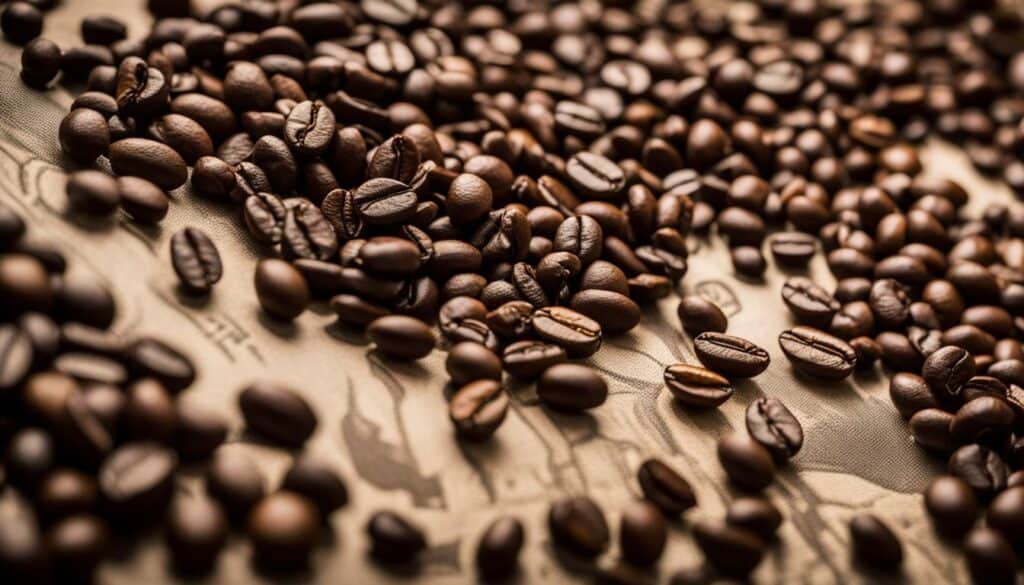
Espresso vs Americano
Espresso, a concentrated shot of coffee served as is, packs a higher caffeine punch compared to Americano, which is diluted espresso. But there’s more to it than just the caffeine content – read on to discover the differences in preparation, taste, and overall experience!
Preparation
When it comes to preparing espresso, there are a few key steps. First, you need to grind the espresso beans into a fine powder. The ground coffee is then placed into the portafilter and tamped down firmly.
Next, attach the portafilter to the espresso machine and start brewing. Hot water is forced through the tightly packed coffee grounds under high pressure, resulting in a concentrated shot of espresso.
Finally, you can enjoy your strong and flavorful cup of espresso either on its own or use it as a base for other coffee beverages like cappuccinos or lattes.
Caffeine content
Espresso beans and coffee beans have different levels of caffeine. Contrary to popular belief, espresso does not have more caffeine than drip coffee. An espresso shot usually has about 63 mg of caffeine per ounce, while regular coffee has 12 to 16 mg of caffeine per ounce.
The average cup of drip coffee contains about 65-120 mg of caffeine, compared to a 1 oz shot of espresso’s 30-50 mg. So, if you’re looking for a stronger buzz, go for a cup of regular coffee instead of an espresso shot.
Taste
Espresso beans and coffee beans have distinct taste profiles. Espresso is known for its intense flavor, often described as rich, bold, and full-bodied. The longer roasting process of espresso beans contributes to their strong taste.
On the other hand, regular coffee made from coffee beans has a more balanced and milder flavor. It can range from fruity and floral notes to nutty or chocolatey undertones, depending on the origin of the beans and the roast level.
Whether you prefer the robustness of espresso or the nuanced flavors of regular coffee, it ultimately comes down to personal preference and what satisfies your taste buds.
Espresso shots also deliver a quick caffeine buzz due to their higher concentration compared to regular brewed coffee. This concentrated dose of caffeine in a small serving size gives espresso its characteristic jolt that many people crave in their morning pick-me-up.
However, enjoy savoring larger cups of coffee throughout the day without experiencing an overwhelming caffeine kick all at once. Regular brewed coffee may be more suitable for you.
Conclusion on Espresso Beans Vs Coffee Beans Caffeine
In conclusion, while espresso beans and coffee beans come from the same plant, they have differences in caffeine content due to their roasting process. Espresso generally has more caffeine per ounce than regular coffee, but a typical shot of espresso contains less caffeine than a cup of drip coffee.
Factors like roast level and brewing method also affect the caffeine content. So whether you prefer a quick espresso shot or a comforting cup of joe, understanding the differences can help you choose your caffeinated beverage wisely.
Does the Price of Coffee Affect Consumer Behavior?
Recent studies have delved into the intricate relationship between the price of coffee and coffee consumer behavior revealed interesting insights. It appears that price plays a significant role in shaping consumers’ choices and preferences. Higher prices tend to discourage consumption, making buyers more selective. However, for premium coffee enthusiasts, a higher price may increase perceived quality, leading to increased demand. Ultimately, the price of coffee undeniably influences consumer behavior in various ways.
FAQs on Espresso Beans Vs Coffee Beans Caffeine
1. Are espresso beans higher in caffeine than coffee beans?
Yes, espresso beans generally have a higher amount of caffeine compared to regular coffee beans due to their darker roast and concentrated brewing method.
2. Can I use coffee beans instead of espresso beans to make an espresso?
No, using regular coffee beans instead of specifically roasted espresso beans may result in a weaker and less flavorful espresso. Espresso requires a specific grind size and roast level for optimal extraction.
3. Does the caffeine content vary between different types of coffee or espresso drinks?
The caffeine content can vary depending on factors like the type of bean used, brewing method, and serving size. Generally, an average shot (30-50ml) of straight black espresso contains more caffeine than a cup (240ml) of brewed coffee.
4. How does the taste differ between espresso and regular brewed coffee?
Espresso has a thicker body and intense flavor compared to regular brewed coffee because it is produced by forcing hot water through finely ground compacted grounds under pressure. Regular brewed coffee is made by filtering coarser grounds with water flowing through them.

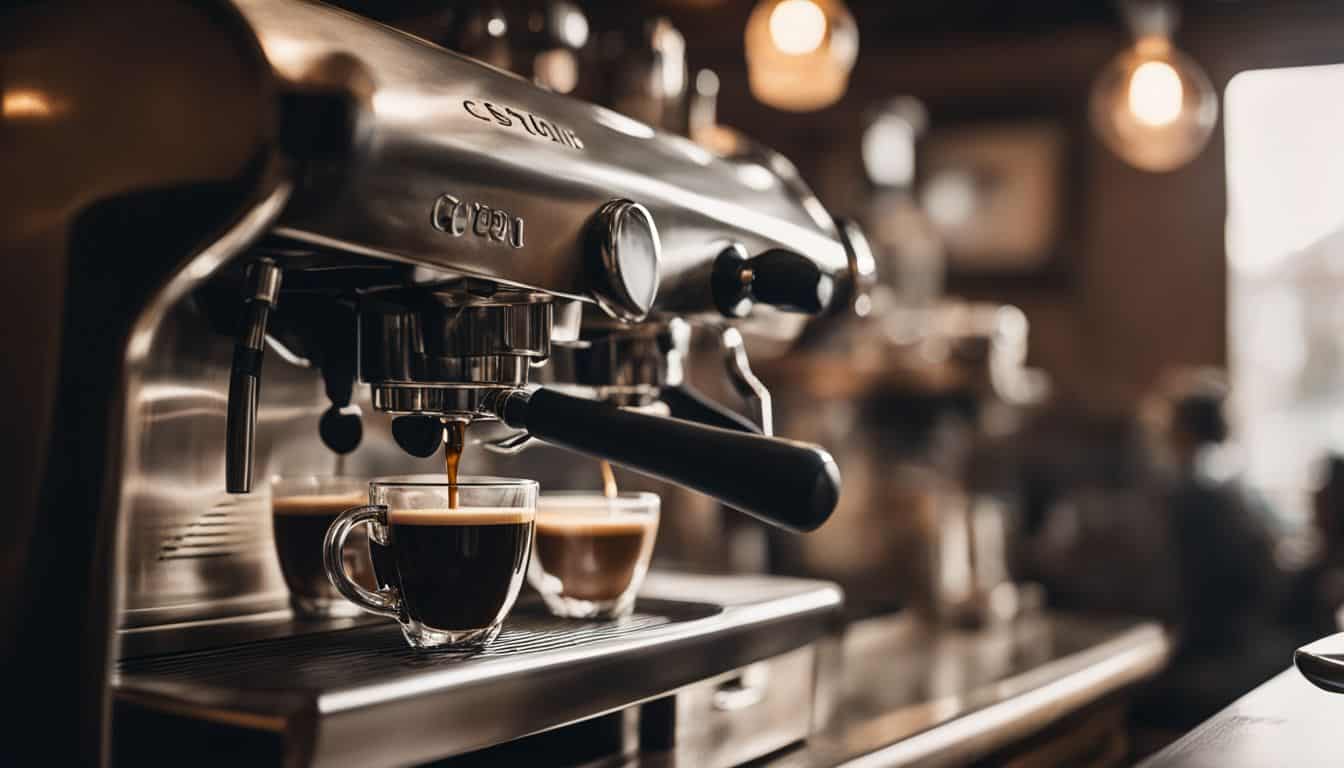
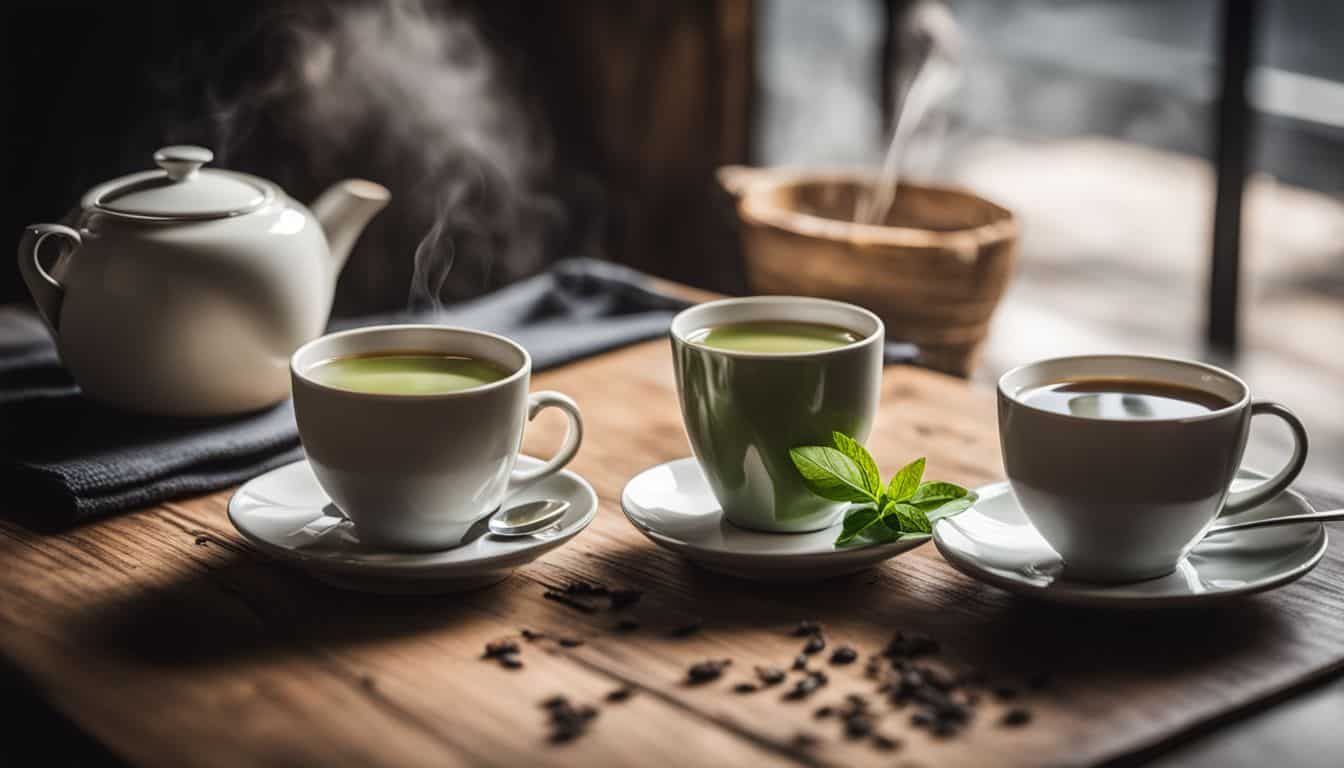
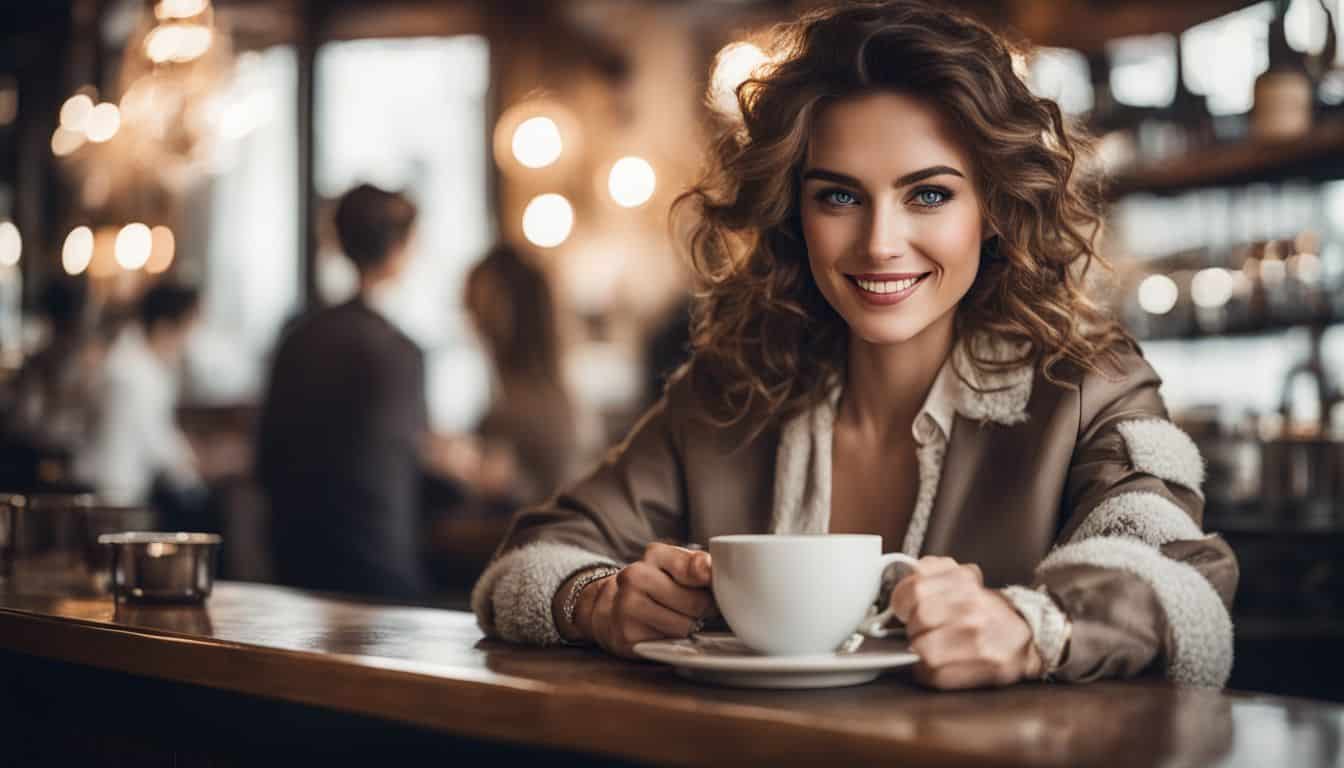
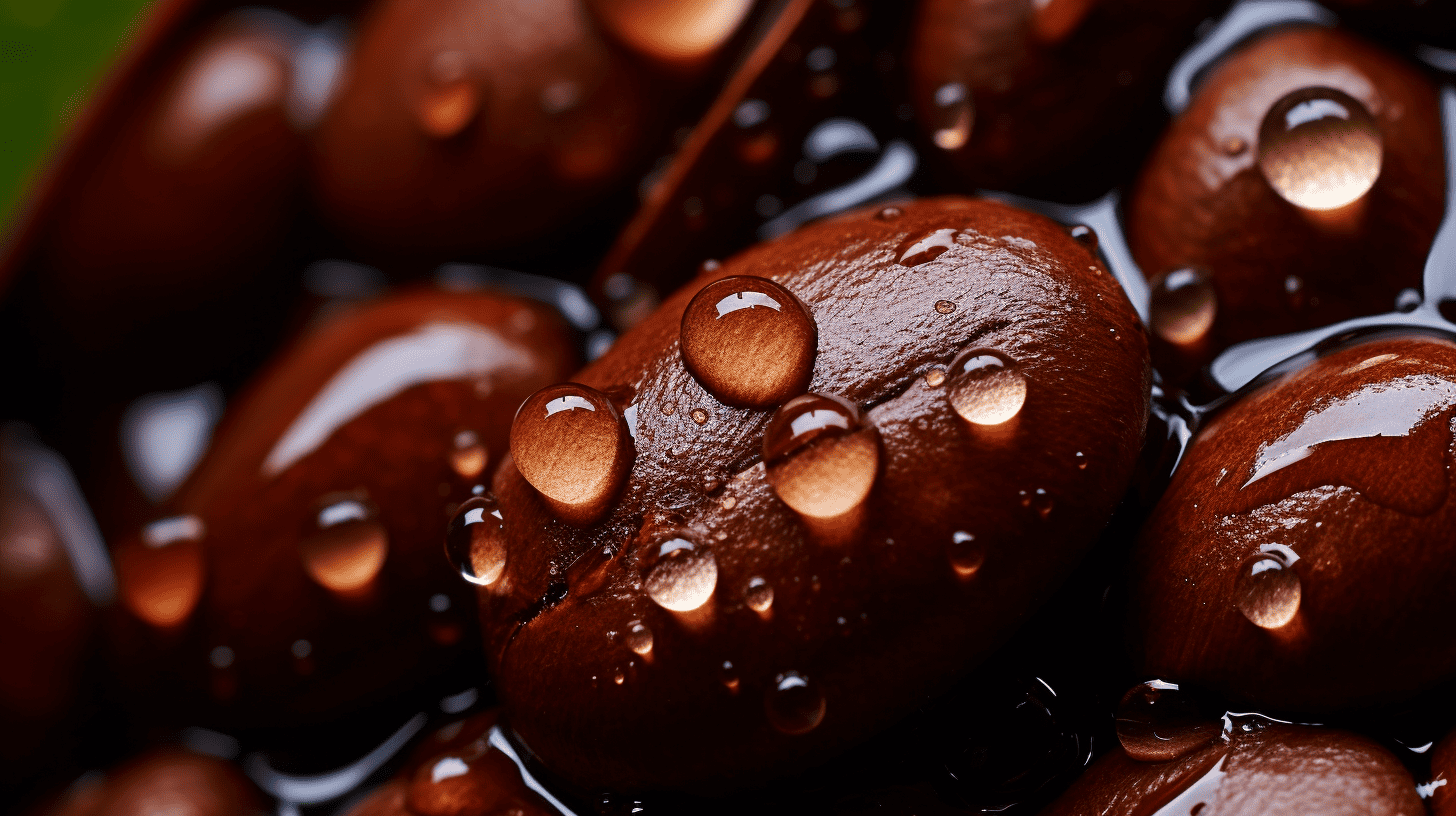
Leave a Reply